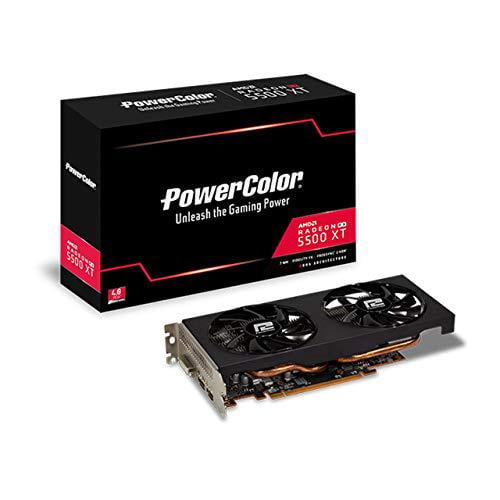

- #Amd radeon 5500 xt driver#
- #Amd radeon 5500 xt manual#
- #Amd radeon 5500 xt software#
- #Amd radeon 5500 xt code#
Residency and additional limitations apply.
#Amd radeon 5500 xt code#
Following purchase, Coupon Code must be redeemed by December 31, 2018, after which coupon is void. Offer available through participating retailers only. The fans on the card do spin up to barely audible levels when the GPU is warmed-up and under sustained load for a while, but they are very quiet overall and while the card is idling, the fans stop spinning altogether.Computer Parts options - 11 groups of items - 40 total selectionsĮlectronics options - 12 groups of items - 56 total selectionsĪccessories options - 10 groups of items - 50 total selections The card was quiet throughout our testing, regardless of the workload. Noise output wasn't an issue with the Sapphire Pulse Radeon RX 5500 XT either. While idling, the GPU and junction temps were similar. Typically, with the Sapphire Pulse at least, the junction temperature under sustained load tracked roughly 10 - 15 degrees higher than the generic GPU temperature.

For example, after hours of benchmarking, while looping Tomb Raider, the junction temperature rarely broke the 77✬ mark. The junction temperature is always higher than the generic GPU temperature under load, but it still remains relatively low.
#Amd radeon 5500 xt software#
Note, however, the "Metrics" screen in AMD's latest Adrenalin software suite is reporting a generic GPU temperature and not the higher junction temperature (mentioned above). And under sustained load, even while overclocked, GPU temperatures only jumped up into the mid-60s. At idle, the GPU temps hovered in the high 40✬ / low 50✬ range. We should also mention that GPU temperatures are a non-issue with the Sapphire Pulse Radeon RX 5500 XT. Due to time constraints, we took the path of least resistance with the Radeon RX 5500 XT, and used AMD's Auto Overclocking tool too see how much additional performance was offered by the card.
#Amd radeon 5500 xt manual#
The tuning options built into AMD's Radeon Software suite offer manual tuning, along with automatic under-volting and automatic GPU and Memory overclocking. AMD claims the increased resolution and accuracy from the additional thermal sensors allows it to increase overall sustained performance, because thermal throttling based on the Junction Temperature is more reliable and effective. Data gathered from this array of sensors is used to determine what AMD is calling the "Junction Temperature", and it's the Junction Temperature data that is used to tune the cards' power and thermal profiles (the Junction Temperature is effectively the hottest part of the GPU die at any given time). With newer GPUs, AMD has incorporated a network of multiple thermal sensors at strategic locations across the die. In previous-generation Radeons, though the GPUs had multiple sensors built-in, a single sensor had been used to determine the GPU temperature and data from that lone sensor was used to control the card's thermal profile. Radeon RX 5500 XT Default Setting Hardware Health Data
#Amd radeon 5500 xt driver#
With the tuning options built into AMD's driver suite though, users have the ability to manually alter frequencies, voltages, fan speeds and the power target, to fine tune performance, power, and acoustics. Like previous-gen Radeons, when the Navi-based GPU at the heart of this card is boosting, frequencies and voltages scale upwards (power and temperature permitting) based on the GPU's workload at the time. We also spent some time overclocking the 8GB Radeon RX 5500 XT using the performance and tuning tools built into AMD's Adrenaline Edition 2020 drivers, which were just recently released. As you can see, the 4GB Radeon RX 5500 XT trails its 8GB counterpart by about 40%. Even still, this is what could happen more often as games get more graphically complex and consume more than 4GB of video memory moving forward. This game clearly favor's NVIDIA's architecture, and we're running at a very high resolution. We are presenting these FF XV benchmark scores to clearly illustrate the potential pitfalls of having only 4GB of memory on a graphics card as we head into 2020.


 0 kommentar(er)
0 kommentar(er)
